Hurricane Lee WILL batter US east coast: Cat-2 storm is forecast to cause waves of up to TEN FEET at beaches and could cause flooding
Hurricane Lee will send massive tidal waves across the East Coast this weekend, even though meteorologists are still unsure whether the eye of the storm will make landfall.
Severe swells could cause waves as high as 10 feet high to crash into the east coast on Sunday, causing flash flooding and structural damage.
The storm system alerted forecasters after it escalated from a Category 1 to a Category 5 hurricane on Thursday night, when wind speeds rose from 80 mph to more than 160 mph within hours.
The storm has since been downgraded to a Cat 2 storm, although forecasters say the storm could strengthen again.
On Saturday evening, the twister was barreling through the Atlantic Ocean at 105 miles per hour, about 455 miles northeast of the Leeward Island in the Caribbean, and is moving westward at 10 miles per hour. This was reported by the National Hurricane Center (NHC)..
The weather service warned that Lee is “expected to grow in size over the coming days,” and while its path is uncertain, it is forecast to cause “dangerous beach conditions” for areas in its path.
Meteorologists have been monitoring Hurricane Lee for days as it barrels toward the US, and is expected to increase in size in the coming days, although its path is uncertain
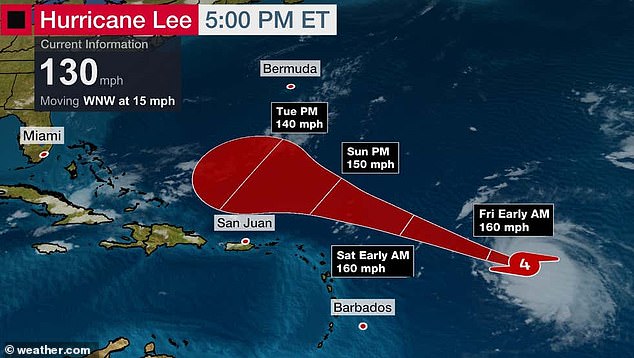
Forecasters have raised hopes that the twister will not make landfall, but the strong current will bring powerful surf and dangerous waves of up to 3 meters high to the east coast.
Hurricane Lee has battled wind shear as it passes over the Leeward Islands, reducing its speed and downgrading it to Category 2.
But NHC warnings that the economy will strengthen this weekend could produce dangerous conditions on Sunday that could worsen further next week.
Meteorologists have struggled to determine the storm’s path since it formed as a Category 1 hurricane on Wednesday, leading to varying predictions about the damage it could cause.
Computer-generated models in recent days have shown that the storm may impact major cities such as New York City and Boston, while it also has the potential to return to the Atlantic Ocean.
However, similar reassuring models have tragically backfired in the past. In 2017, meteorologists predicted that Hurricane Irma would turn toward the ocean before ravaging Florida’s Gulf Coast and causing at least 92 deaths.
Even if Lee never makes it to the US, the spiral over the Atlantic Ocean will send large currents and large waves to large parts of the coastline by Sunday.
The National Hurricane Center warned that dangerous surf conditions could intensify over the course of the week – with a possible landfall near the weekend.
As east coast residents brace for impact, the Caribbean islands offered a glimpse of what’s to come as heavy swells battered the region’s northeast on Saturday evening.
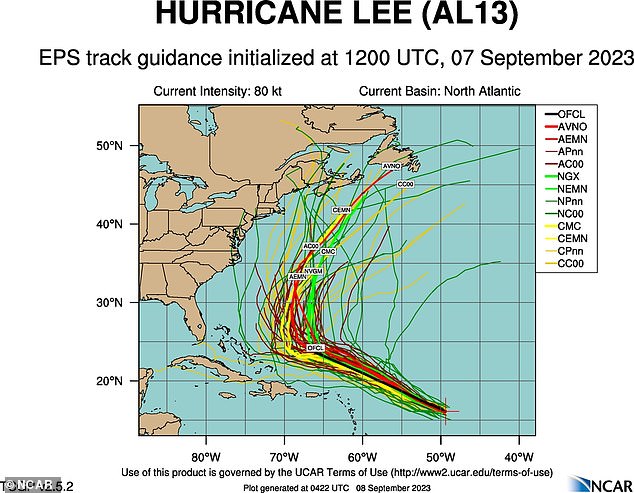
Forecasters have struggled to determine the exact path and strength of Hurricane Lee, leading to varying estimates about the extent of damage it could cause.
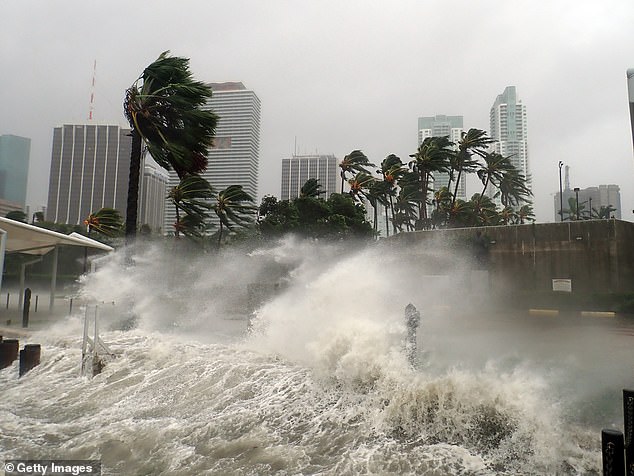
While some models suggest Hurricane Lee may not make landfall, similar reassuring predictions were made about Hurricane Irma in 2017 before it tore up Florida’s Gulf Coast (pictured)
As Hurricane Lee raged in waters to the north, coastlines from the British Virgin Islands to Puerto Rico were on high alert Saturday evening as waves of up to 15 feet were possible.
The development prompted Puerto Rico authorities to warn people to stay out of the water, with Captain José Díaz of the country’s Coast Guard Sector saying, “We are concerned about people and boaters who may be underestimating the impact of this passing storm.” ‘
“The increase in expected sea state of 10 to 15 feet severely reduces our ability to respond to a maritime emergency with the full use of our resources.”
The eye of the hurricane was captured in breathtaking footage by the US Air Force, and meteorologists tracked waves up to 50 feet high near the center.
Meteorologists have apparently gone back and forth on whether the hurricane will hit the East Coast or possibly turn around. On Wednesday, the NHC warned: “Most intensity models are very aggressive, pushing Lee to major hurricane status by the weekend.”
In a forecast discussion on Friday, the center pushed back on this forecast, conceding that “it is far too early to know what level of impact, if any, Lee could have along the US East Coast, Atlantic Canada or Bermuda late next year.” week’.
The forecaster added that this could be because “the hurricane is expected to slow significantly over the southwestern Atlantic Ocean.”
Forecasters have consistently said the storm is reforming and restructuring, a process that saved many Floridians last month when Hurricane Idalia hit Florida’s Gulf Coast.
Although the hurricane caused significant damage and led to at least two deaths, experts warned that the damage could have been much worse.
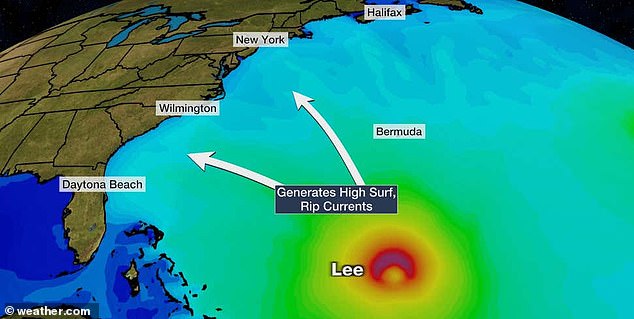
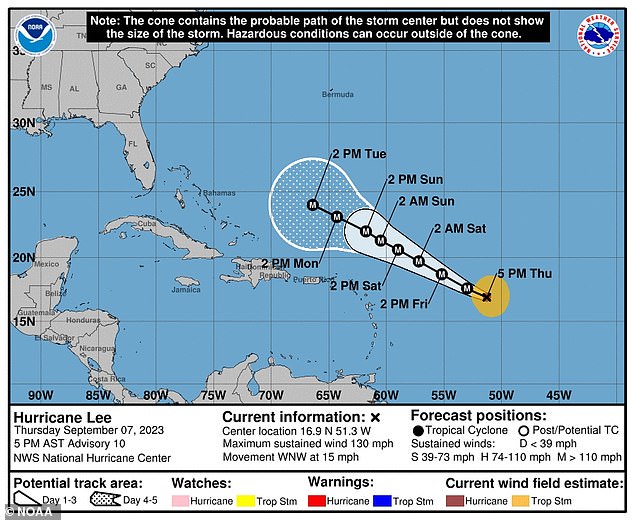
The storm system battled the wind as it passed over the Caribbean,
When Florida residents feared the tornado could hit the state capital of Tallahassee, the hurricane turned and slowed thanks to a natural phenomenon in which the wall around the eye of the hurricane is “replaced” as the system restructures.
The natural process that may have saved lives is known among meteorologists as an “eyewall replacement cycle” and is a common part of a hurricane’s buildup before it makes landfall.
As storms become more powerful, the eye of the storm becomes narrower and tighter as it accelerates. When it reaches its maximum speed, a new eyewall can form around the epicenter.
“Like a figure skater who draws in her arms instead of extending her arms, the hurricane spins with much more energy, force and ferocity when it is closely watched,” said Ryan Maue, a meteorologist and former chief scientist at the National Oceanic. and atmospheric administration.
When this happens, the eye of the storm loses momentum, which is what happened Wednesday morning when Idalia was downgraded to a Category 3 hurricane.
Although an “eyewall replacement cycle” reduces a storm’s strength, it also increases its reach as the epicenter expands while wind gusts decrease. If this process is allowed enough time, the storm can become much more powerful than before, as wind speeds can increase again.
